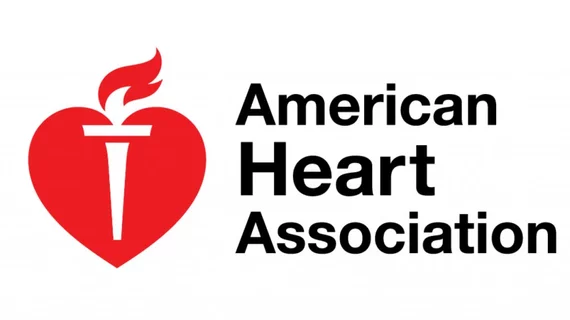The American Heart Association issued an urgent call to action Jan. 24, citing a “disturbing plateau” in CVD outcomes that’s stemmed from a lag in drug innovations, poorer quality of care and a rise in the prevalence of risk factors like obesity and hypertension.
The eight-page presidential advisory established the AHA’s new Value in Healthcare Initiative—a combined effort from the organization and the Duke University Robert J. Margolis, MD, Center for Health Policy to call attention to trends in CV care, spread innovations, develop actionable plans and launch a series of pilot projects in emerging areas of heart care.
“When we talk with patients, we hear about their appreciation for lifesaving and life-improving treatments, but also their rising concerns about whether they can afford the cost of that care,” Mark McClellan, MD, PhD, director of the Duke-Margolis Center for Health Policy and a former FDA commissioner, and co-authors wrote. “Beyond affordability, patients report that care improvements are not equally shared, that care is often complex for them to manage and does not reflect their goals and priorities, and that they struggle with addressing ‘upstream’ risk factors such as diet, smoking and activity.”
McClellan penned the advisory together with Nancy Brown, CEO of the AHA; John J. Warner, MD, past president of the AHA; and Robert M. Califf, MD, former FDA commissioner. In their work to launch the new initiative, they identified five major issues threatening CVD care in the U.S. and abroad.
1. CVD mortality isn’t trending down anymore.
Despite decades of new research, clinical innovations and improved treatments, cardiovascular disease remains the leading cause of death both in the U.S. and worldwide, McClellan et al. wrote. But while we’re used to seeing a reduction in CVD deaths as a result of updated practices, CVD mortality has actually plateaued in recent years.
The authors said it’s remained “essentially flat,” slowing at a rate of 0.5 percent per year compared to cancer’s steady 1.5-percent-per-year decrease. Further, in-hospital mortality is leveling off, seeing no significant drops since 2010, and stroke mortality rates have been rising or fluctuating since 2013.
2. Sex, race and ethnicity gaps still exist, and they’re getting worse.
Outcomes and treatment quality continue to vary between sexes, races and ethnicities, McClellan and colleagues said, but as we move forward CV mortality seems to be increasingly determined by things like location, socioeconomic status and education. Disparities are likely the product of poor access to primary care, modifiable risk factors and challenges with social determinants, all things the authors suggest the field should pay more attention to.
3. The value of cardiovascular care is declining.
According to the advisory, cardiology spending has increased by 147 percent over the past two decades, and expenditures per person using care have more than doubled. But those dollars aren’t always tied to quality, McClellan et al. said—one-third of all healthcare spending today is on services that don’t improve patient outcomes, decreasing the value of CV care.
“Although spending on technological changes for cardiovascular care showed high value through the 1990s, with benefits in length and quality of life that far outweighed their costs, the currently stagnating (or worsening) trends in cardiovascular outcomes alongside higher spending suggest that this trend no longer holds,” they wrote. “Cardiovascular care costs are not increasing uniformly, with some geographic areas or organizations able to produce similar or better outcomes for similar populations at a substantially lower cost.”
4. We’re missing countless opportunities for early intervention.
The authors said there are six steps to the prevention and treatment of cardiovascular disease, and we’re currently missing substantial opportunities to intervene at every step.
Those missed opportunities include a failure to make risk factor modifications early, which can reduce the odds of CVD by 80 percent; failure to elicit and follow people’s goals and needs, which can lead to better healthcare experiences; failure to diagnose, since 20 to 40 percent of MIs occur in undiagnosed CVD patients; failure to use proven first-line treatments, as up to 67 percent of patients are nonadherent to statins after a year; failure to use advanced treatments like PCSK9 inhibitors, the majority of which aren’t approved or filled; and failure to provide supportive care, since only 5 percent of severe heart failure patients receive palliative care.
5. Pharmaceutical development has hit a wall.
McClellan and co-authors said that compared with the high burden of CVD morbidity and mortality, the pipeline of new drugs for cardiovascular disease is “relatively limited.” Only one new cardiovascular drug was approved in 2017, and between 1996 and 2015, just 40 CVD-related new active substances were approved, compared to 110 oncological new active substances.
The authors said other disease areas might have more opportunities for biomedical innovation, but clinical trials for cardiovascular products are also pricier and more complex than their counterparts in other fields. One study estimated the average pivotal CV clinical trial costs $157 million—three times more than a similar cancer trial and six times more than other disease areas.
“These factors create an environment in which new products must undergo large, expensive trials with substantial data collection and extensive auditing requirements,” the authors wrote. “This significant standard also reflects the well-documented failure of promising but unvalidated intermediary measures to accurately predict clinical outcome differences, as well as the failure of even validated intermediary measures to predict clinical outcome treatment effects.”
Find the full advisory from the AHA and Duke-Margolis Center here.

